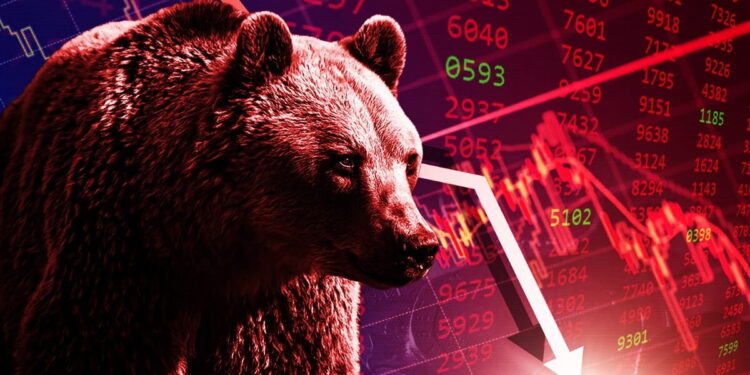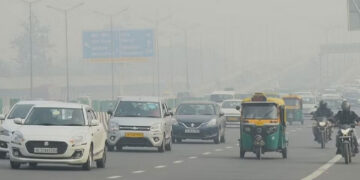
Sensex and Nifty Crash: Global equity markets witnessed a catastrophic Monday as financial tremors triggered by US President Donald Trump’s aggressive tariff policy sent shockwaves through investor confidence. In India, the Bombay Stock Exchange (BSE) Sensex opened with a staggering fall of nearly 4,000 points, while the National Stock Exchange (NSE) Nifty slumped by over 1,100 points — marking one of the steepest intraday declines in recent history.
The collapse comes on the back of a 26% tariff specifically levied on Indian exports, along with a universal 10% base tariff introduced across the board. The announcement, part of Trump’s self-declared mission to restore the “golden age” of American manufacturing, has roiled global trade sentiments and raised fears of a prolonged recession.
At 9:00 AM IST, as trading resumed after the weekend break, the Sensex nosedived by 3,939.68 points to hit 71,425.01, down nearly 3.5% from its previous close. The Nifty mirrored the freefall, sliding by 1,160.80 points to settle at 21,743.65. By 10:00 AM, the Sensex recovered slightly but still remained over 2,700 points in the red.
The Indian rupee wasn’t spared either. It opened weaker by 30 paise against the US dollar, trading at ₹85.74 amid heightened global uncertainty and outflow of foreign institutional investments.
Trump’s Tariff Shock Sends Ripples Through Sensex and Global Markets

The tariffs, ranging from 10% to 50%, are being implemented country-wise, with India seeing a steep 26% hike. The move has sparked outrage among Indian exporters, particularly those dealing in automotive components, IT services, textiles, and agricultural products.
President Trump, addressing reporters early Monday, stood firm on his decision, calling the tariffs a “bitter pill” needed to “fix what’s broken.” Analysts across continents, however, believe this move could cause more harm than good.
“This is a global chain reaction,” said Ajay Bagga, a prominent market strategist. “India is not being punished for its domestic policies but is caught in the crossfire of global trade wars. What we’re seeing today is just the beginning. The Indian economy needs robust fiscal and monetary measures immediately.”
Sector-Wise Bloodbath
Indian markets saw widespread losses across sectors. Technology, which relies heavily on US-based clients, was the worst-hit, with IT giants like Infosys and Tech Mahindra losing over 6%. Automobile stocks also tanked, as did major players in steel and construction.
Smaller and mid-cap stocks weren’t immune. The broader indices saw a drop of 4.6% to 6.2%, wiping out lakhs of crores in market capitalization.
“Investors are in panic mode,” said Sunil Gurjar, a SEBI-registered research analyst. “Nifty50 broke through its first support and is inching towards the next. If this continues, we might witness a technical bear market much sooner than expected.”
Asian and Global Markets Bleed
The crisis wasn’t limited to India. Asian markets, the first to open post-announcement, bore the brunt of the initial sell-off. Japan’s Nikkei 225 index plunged by 8%, South Korea’s Kospi dropped by 5%, and Hong Kong’s Hang Seng Index nosedived by over 10%.
China’s blue-chip CSI300 index also registered a fall of nearly 7%, sending alarm bells ringing across investment desks globally.
European markets showed early signs of weakness, and US futures indicated heavy losses in upcoming sessions. The Nasdaq is now officially in bear territory, having dropped more than 20% from its recent high.
What Lies Ahead for Sensex Amid Tariff Turbulence?
Financial experts believe that this tariff-induced market panic could lead to policy changes both domestically and globally.
“The irrational nature of these tariffs won’t last long,” stated Dr. V K Vijayakumar, Chief Investment Strategist at Geojit Financial Services. “India’s export exposure to the US is relatively limited at just 2% of its GDP. However, the sentiment damage is real and immediate. The government must respond quickly — perhaps with targeted sectoral incentives and stimulus.”
The Reserve Bank of India and the Ministry of Finance are expected to closely monitor the developments. A high-level review meeting is reportedly scheduled ahead of the Monetary Policy Committee (MPC) meeting on April 9.
In the short term, analysts advise retail investors to adopt a “wait and watch” approach. Defensive stocks and domestic consumption-driven sectors like financials, aviation, hospitality, and pharmaceuticals may offer some shelter from the storm.















